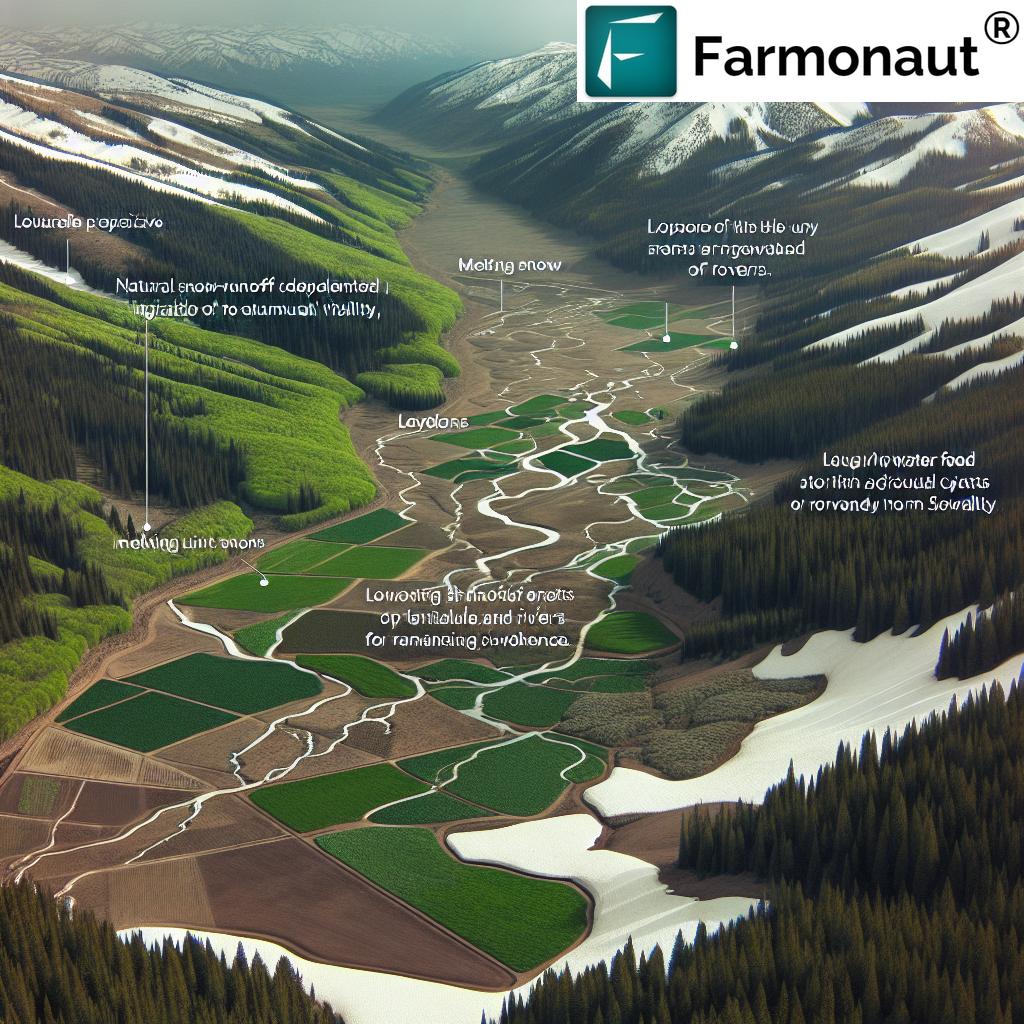Arizona Citrus Fertilizer, Clover Food Plot & Best Zinc: Sustainable Nutrient Management for 2025
“Arizona’s citrus yield can increase by 20% with optimized fertilizer blends and efficient soil management practices.”
Table of Contents
- Summary: The Cornerstone of Modern Fertilization in 2025
- Arizona Citrus Fertilizer: Tailoring Nutrients to Arid Conditions
- Clover Food Plot Fertilizer: Sustainability and Wildlife
- Best Zinc Fertilizer for Plants: Precision and Bioavailability
- Soil Testing, Remote Sensing & Technology Advancements
- Innovative and Sustainable Fertilizer Use in 2025
- How Farmonaut Can Help: Satellite-Driven Soil & Crop Insights
- Comparative Fertilizer Benefits Table
- FAQ
- Conclusion: Resilient, Efficient, and Productive Agriculture
Summary: The Cornerstone of Modern Fertilization in 2025
In 2025, sustainable and efficient fertilizer management remains a cornerstone of productive agriculture, especially in specialized settings like Arizona’s citrus industry, clover food plots for wildlife and soil improvement, and zinc-enriched crop production. Precision agriculture and advanced technologies are driving a new era of scientifically informed fertilization, allowing us to maximize yield, maintain soil health, and achieve environmental stewardship.
Whether you’re a citrus grower navigating Arizona’s arid climate, a land manager optimizing a clover field for wildlife, or a farmer battling micronutrient deficiency in your crops, understanding your soil, crops, and optimal fertilizer formulations is crucial for long-term agriculture success in 2025.
This comprehensive guide brings you the latest science, practical tips, and innovative solutions for Arizona citrus fertilizer, clover food plot fertilizer, and the best zinc fertilizer for plants. Let’s explore how 2025’s best practices empower us to nurture healthy, productive, and sustainable soils and crops in every context.
Arizona Citrus Fertilizer: Tailoring Nutrients to Arid Conditions
Unique Challenges for Citrus Fertilizer Application in Arizona
Arizona presents unique challenges for citrus growers. Its arid climate is characterized by low rainfall, high evapotranspiration, and generally alkaline soils. These factors necessitate precise fertilizer management to prevent nutrient deficiencies, waste, or environmental impact.
- Low Rainfall & High Evapotranspiration: Nutrient losses from leaching and volatilization increase; irrigation systems must be integrated with fertilization strategy.
- Sandy, Coarse Soils: Rapid percolation can lead to fertilizer leaching, making controlled-release fertilizers more effective compared to fast-soluble types.
- Alkaline Soil pH (7.5+): High pH drastically reduces the availability of micronutrients like zinc (Zn), iron (Fe), and manganese (Mn), which are vital for tree health and fruit quality.
Key Nutrient Requirements: N-P-K & Essential Micronutrients
Citrus trees require a balanced supply of nutrients:
- Nitrogen (N): Supports vegetative growth, leaf production, and fruit set. Nitrogen is particularly crucial in the early stages of citrus production and during fruit development.
- Phosphorus (P): Critical for root growth and energy transfer. Often supplied as monoammonium phosphate (MAP) or diammonium phosphate (DAP).
- Potassium (K): Enhances fruit quality, color, and shelf-life. Often applied as sulfate of potash or other potassium-rich fertilizer formulations.
The Role of Zinc and Other Micronutrients in Arizona Citrus
Zinc is frequently the most limiting micronutrient for Arizona citrus. Its role includes:
- Enzyme Function: Essential in over 300 plant enzyme systems.
- Hormone Regulation: Affects auxin and gibberellin synthesis impacting fruit size and tree vigor.
- Leaf Expansion & Fruit Quality: Deficiencies often seen as interveinal chlorosis, stunted leaf and fruit size, and dieback.
Because alkaline soils reduce zinc availability, both soil-applied granular zinc fertilizers and targeted foliar applications of zinc sulfate or chelated compounds are required:
- Soil-Applied Zinc (Zn-S or Zn-EDTA): For steady, season-long supply, build background soil Zn levels.
- Foliar Sprays: For rapid correction of visible deficiencies—especially important at critical growth stages.
Modern Arizona Citrus Fertilizer Strategies: Controlled-Release & Precision Application
- Controlled-Release Fertilizers: Deliver nutrients steadily over time, minimizing leaching and volatilization.
- Site-Specific Applications: Supported by remote sensing and soil mapping for matched crop needs and minimized waste.
- Fertigation: Integration of fertilizer with drip and microsprinkler irrigation; improves distribution and reduces run-off.
- Micronutrient Monitoring: Scheduled foliar and/or granular addition of zinc, iron, and manganese to correct and prevent deficiencies.
In 2025, integrating artificial intelligence platforms and satellite-based solutions greatly enhances precision in fertilizer management for Arizona’s citrus producers.
Clover Food Plot Fertilizer: Sustainability, Forage, and Wildlife
Clover food plots are the backbone of many wildlife management plans and soil improvement strategies. By utilizing clover, managers achieve two goals: provide a high-nutrition forage for game animals and boost the nitrogen fertility of the local soil ecosystem.
“Zinc deficiency affects about 49% of global soils; targeted zinc fertilizers drastically boost clover and plant health.”
How Clover Enriches Soil and Supports Wildlife
- Biological Nitrogen Fixation: Clover pulls nitrogen (N) from the air, storing it in root nodules—greatly reducing or eliminating the need for synthetic N-fertilizer applications.
- Wildlife Attraction: High protein content and extended green period make clover an ideal food plot for deer, turkey, and small game.
- Soil Improvement: Deep taproots break up compacted soils, increase organic matter, and foster beneficial microbes.
Clover Food Plot Fertilizer: Which Nutrients Matter in 2025?
- Phosphorus (P): Drives root growth, clover establishment, and nodule development.
- Potassium (K): Supports vigorous plant growth, persistence, and stress resistance.
- Micronutrients (Zn, B, Mn): Zinc deficiency is a major hidden cause of poor clover vigor; chelated zinc fertilizers are highly effective.
Nitrogen is rarely needed except as a light starter dose for newly-established plots before the clover’s own N-fixation takes over.
Best Practices: Application Timing & Innovative Solutions for Clover Food Plot Fertilization
- Starter Fertilizer: Apply P and K (such as DAP and potash) just before or at planting for rapid clover establishment.
- Topdressing: Apply maintenance doses annually or as indicated by soil tests, especially in plots heavily grazed by wildlife.
- Zinc Management: Foliar sprays or granular chelated Zn fertilizers boost health and biological nitrogen fixation capacity.
- Organic Amendments: Consider compost, manure, or commercial biofertilizers with beneficial microbes—ideal for long-term soil fertility and sustainability.
Seasonal timing is vital: Match fertilizer applications to clover’s main growth periods (early spring, late summer) and wildlife activity when forage production is most needed.
Explore eco-friendly input management further with product traceability powered by blockchain to ensure your food plots fuel both soil health and supply-chain transparency.
Best Zinc Fertilizer for Plants: Precision, Chelation, and Advanced Solutions
Zinc Deficiency: A Global and Local Challenge
- About 49% of global soils are zinc-deficient—limiting plant health, yield, and food quality.
- Arizona soils, similar to many arid and calcareous regions, are especially prone to Zn unavailability, impacting high-value crops from citrus to clover.
Zn deficiency presents as:
- Stunted growth, chlorosis (yellowing between leaf veins), lower fruit quality/quantity.
- Impaired enzyme and hormone function, decreasing both crop vigor and stress tolerance.
Which Zinc Fertilizer Is Best for Plants in 2025?
- 1. Chelated Zinc Fertilizers (Zn-EDTA, Zn-DTPA):
- Stay soluble in high pH/alkaline soils (like Arizona)—maximizing bioavailability for plant uptake.
- Compatible with fertigation systems for uniform application—ideal for precision farming.
- Fewer losses to soil binding vs. traditional forms.
- 2. Zinc Sulfate:
- Cost-effective; can be applied as a soil amendment or a foliar spray for rapid deficiency correction.
- Works well as a boom application in clover fields or orchard situations.
- 3. Nano-Zinc Fertilizer:
- Emerging technology—ultra-fine particles offer greater mobility, lower application rates, and reduced environmental footprint.
- Expected to be more widely available and affordable by 2025.
Ensuring optimal zinc nutrition is a cornerstone of plant health management for all modern farm and food plot systems—especially in 2025’s climate-smart agriculture paradigm.
Tip: Track your zinc management strategy with large-scale farm management platforms — these systems help optimize fertilizer efficiency and reduce input waste across vast fields.
Soil Testing, Remote Sensing, and Technology-Led Fertilization in 2025
Why Precise Soil Data Matters More Than Ever
Precision farming thrives on accurate data, allowing growers and farmers to tailor fertilizer applications exactly to field needs—reducing both input costs and environmental impact.
Advances in soil testing, remote sensing, and AI-powered advisory platforms are empowering agriculture to achieve both high yields and sustainability goals in 2025.
- Soil Sampling: Pinpoints N-P-K and micronutrient status, guides which fertilizers, rates, and techniques to use.
- Satellite Monitoring: Allows whole-field diagnostics, remote moisture and chlorophyll assessment, and historic yield analysis.
- Machine Learning & AI: Frees up time by automating diagnosis and prescriptive fertilizer recommendations.
For real-time crop and soil monitoring, check out Farmonaut’s Android, iOS, and web solutions:
Farmonaut’s API also enables third-party developers and businesses to plug precise soil/crop data directly into their management platforms. Get access to the API here or explore the developer docs for integration details.
Innovative and Sustainable Fertilizer Use in 2025
Key Trends Reshaping Fertilizer Application and Management
- Controlled-Release and Slow-Release Formulations: Crucial for arid environments such as Arizona, these formulations reduce leaching, volatilization, and runoff.
- Integration with Smart Irrigation: Fertigation burnishes fertilizer use efficiency, especially when monitored with modern sensors and remote platforms.
- Soil Health Practices: Cover cropping, reduced tillage, and advances in microbial and biofertilizer application support ecological nutrient recycling.
- Blockchain Traceability and Sustainability Reporting: Tools like carbon footprint monitoring and product traceability help document and validate sustainable farming practices.
Fertilizer Application Strategies Adapted for the Environment
- Leverage precision technologies for spatially variable application of Arizona citrus, clover, and zinc fertilizers based on site-specific soil data.
- Utilize foliar and chelated micronutrient applications to address deficiencies fast and efficiently—minimizing overall usage.
- Integrate organic sources (compost, manure) with modern fertilizers for balanced, long-term soil improvement.
- Regularly monitor environmental impact with digital tools to track fertilizer use, leaching, runoff, and emissions.
For those managing large areas—whether groves, food plots, or diverse fields—comprehensive farm management platforms simplify the process of recording, mapping, and analyzing fertilizer use in real time.
How Farmonaut’s Technology Enhances Fertilizer Efficiency and Sustainability
As a satellite technology leader, we at Farmonaut provide robust tools for agriculture operations of any scale. Our solutions empower growers and land managers to achieve efficient, sustainable fertilizer management with:
- Satellite Crop Monitoring: Real-time data on soil moisture, vegetation health (NDVI), and nutrient status for early detection of deficiency or stress in citrus groves, clover food plots, or other crops.
- AI-Based Advisory: Customized, in-app guidance on fertilizer type, rate, and timing—drawing from satellite and field data for precise, site-specific recommendations.
- Blockchain Traceability: Full tracking and validation of fertilizer inputs, movements, and environmental impact for compliance or eco-certifications.
- Environmental Monitoring: Carbon footprinting and emissions tracking at the farm, plot, or portfolio level for sustainable reporting.
- Resource and Fleet Management: Fleet tracking and logistics solutions to optimize fertilizer delivery and machinery allocation across fields.
Our subscription model (see below) is designed to be affordable and scalable—so everyone from smallholders to agribusinesses can leverage next-generation fertilizer efficiency and promote environmental stewardship in 2025 and beyond.
Ready to optimize your Arizona citrus fertilizer, clover food plot fertilizer, and best zinc fertilizer for plants approach? Choose a Farmonaut plan or try our app now!
Comparative Fertilizer Benefits Table: Arizona Citrus, Clover Food Plots & Zinc Options (2025)
| Fertilizer Type | Nutrient Content (N-P-K or Zn %) | App. Rate (kg/acre) | Sustainability Rating | Yield Improvement (%) | Env. Impact | Best Crop Suitability |
|---|---|---|---|---|---|---|
| Controlled-Release Citrus Blend | 12-6-15 + 1.5% Zn | 250–350 | High | 18–22 | Low | Citrus (Arizona) |
| Standard Citrus NPK Blend | 14-7-21 | 300–400 | Moderate | 15–18 | Medium | Citrus (Arizona) |
| Granular Zinc Sulfate | ZnSO4 (36% Zn) | 5–10 | High | 12–15 | Low | Citrus, Clover & Zn-deficient Crops |
| Chelated Zinc EDTA | Zn-EDTA (12–14% Zn) | 2–5 | High | 10–18 | Very Low | All Crops, especially High pH Soils |
| Starter Clover Mix (DAP + Potash + Zn) | 18-46-0 + 0-0-60 + 2% Zn | 120–180 | High | 15–20 | Low | Clover Plots |
| Biofertilizer with Beneficial Microbes | Varies (NPK + Zn Traces) | 60–120 | Very High | 5–12 | Very Low | Clover, All Sustainable Plots |
| Nano-Zinc Suspension | Zn (20–25% W/V) | 0.5–1 | High | 10–16 | Very Low | All Crops (Next-Gen Zn) |
| Organic (Compost + Ash) | 0.8-0.5-1.2 + Zn traces | 2000–4000 | Very High | 5–8 | Very Low | Clover, Citrus Support |
FAQ: Arizona Citrus Fertilizer, Clover Food Plot Fertilizer & Best Zinc for 2025
What’s the most effective Arizona citrus fertilizer for alkaline soils?
Controlled-release blends with chelated micronutrients (especially Zn, Fe, Mn) are optimal. Pair with granular zinc sulfate or foliar chelated zinc for persistent pH-related deficiencies. Always test your soil for precise recommendations.
When should I fertilize a new clover food plot in Arizona or the Southwest?
Apply a starter blend (e.g., DAP + potash + Zn) at or just before sowing. Focus on phosphorus, potassium, and zinc rather than nitrogen. Maintenance applications should be based on annual soil tests and intensity of wildlife grazing.
How do I identify zinc deficiency in citrus and other plants?
Signs include yellowing between the veins of young leaves (interveinal chlorosis), stunted growth, reduced fruit size/quality, and sometimes dieback in severe cases. Lab analysis of soil and leaf tissue is recommended to confirm.
Which is the best zinc fertilizer for plants in 2025?
Chelated zinc products (Zn-EDTA or Zn-DTPA) are the most efficient, especially in high pH or calcareous soils. Nano-zinc formulations are gaining popularity for their higher bioavailability and environmental sustainability.
How can satellite technology enhance fertilizer management?
Satellite platforms like Farmonaut’s provide real-time vegetation and soil nutrient maps, enabling precise fertilizer targeting, early deficiency detection, and documentation for environmental compliance—empowering both smallholders and agribusinesses.
Conclusion: Efficient, Productive, and Sustainable Fertilizer Management for 2025 & Beyond
2025 marks a new era of tailored, precision-focused fertilizer use—driven by deep understanding of soil health, innovative fertilizer products, and cutting-edge technologies.
- Arizona citrus growers can maximize yield and quality by selecting the right nutrient mixes—especially zinc, potassium, and chelated micronutrients—while leveraging controlled-release products to fit their specific arid environment.
- Clover food plot managers and wildlife enthusiasts achieve more with science-based phosphorus, potassium, and zinc nutrition—leading to resilient forage plots and long-term soil improvement.
- All growers can address the 49% global zinc deficiency risk by choosing chelated or nano-zinc fertilizers for maximum bioavailability and sustainability.
Modern solutions like satellite monitoring, AI-based fertilizer recommendations, and blockchain-powered traceability are reshaping how we manage inputs—ensuring every pound of fertilizer is used both efficiently and responsibly.
As we embrace the future of agriculture in Arizona and similar regions, let’s prioritize informed fertilizer choices, new technologies, and ecological stewardship for resilient, productive, and environmentally sound cropping systems.
Empower Your 2025 Fertilizer Strategy
- Leverage real-time crop and soil monitoring with Farmonaut web, Android, or iOS app (see buttons above).
- Maximize input efficiency for citrus, clover, and all crops with data-driven insight.
- Increase traceability and sustainability of your farm using Farmonaut’s product traceability features.
- Monitor and reduce your fertilizer carbon footprint with specialized sustainability tools.
For more details on advanced, holistic farm management, explore our crop, plantation, and forest advisory platform.
Take your fertilizer and soil management to the next level for 2025—healthy plants, healthy yields, and a healthy planet.













